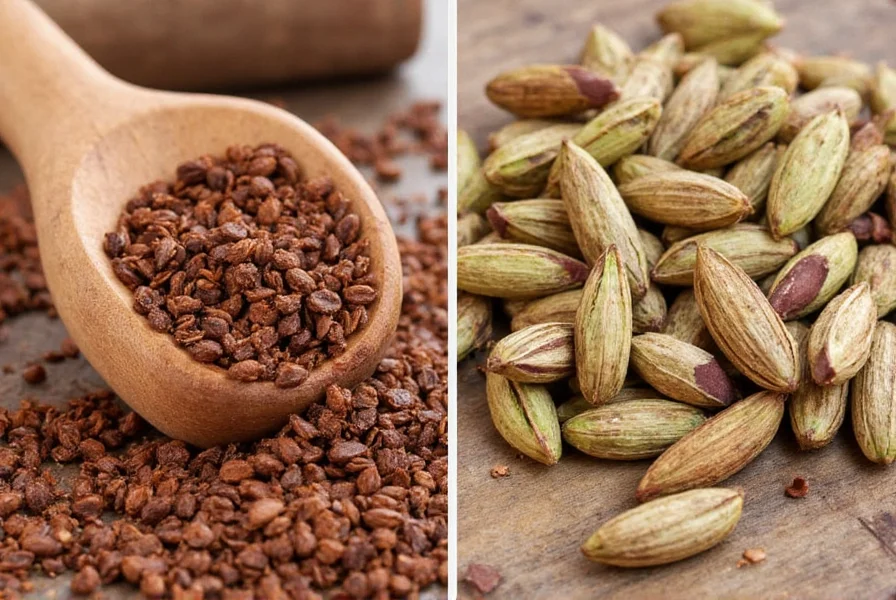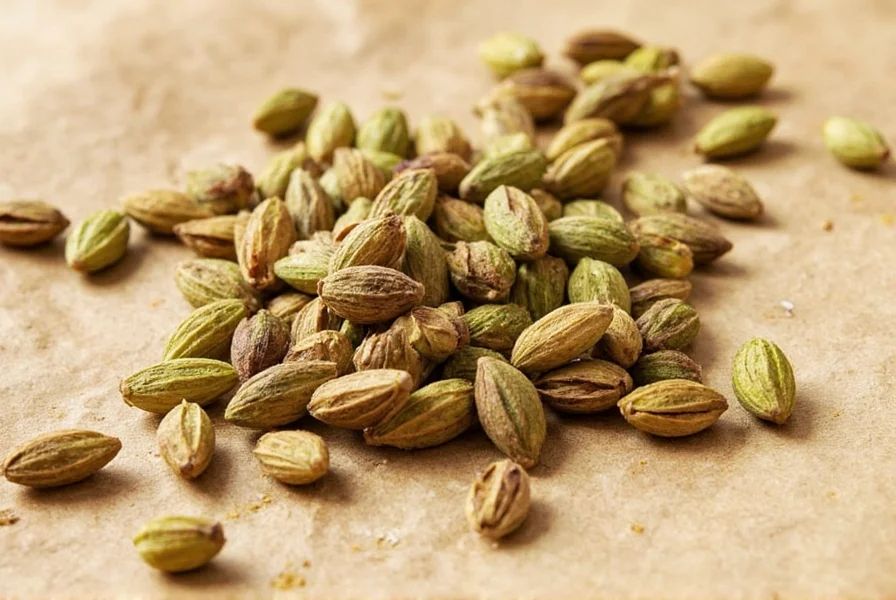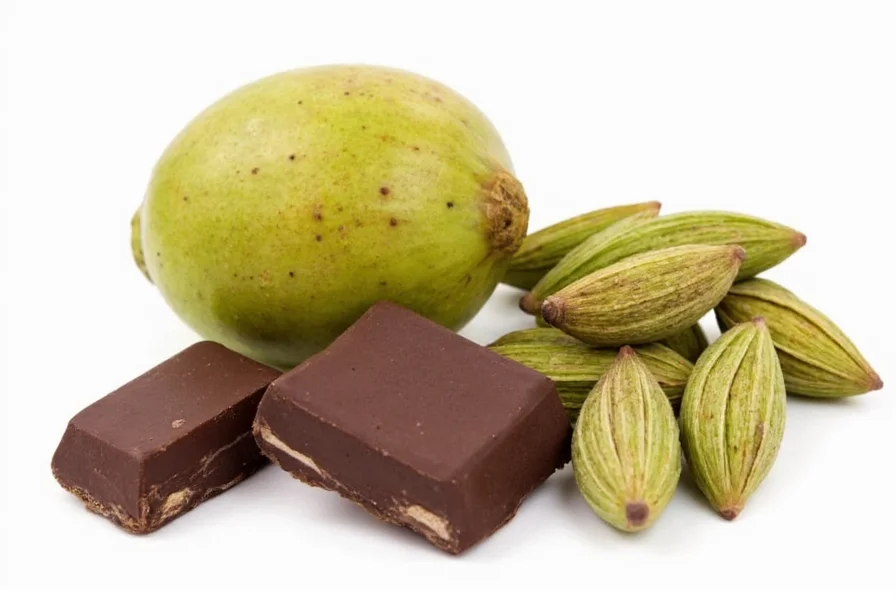For centuries, culinary traditions from Scandinavia to the Middle East have recognized the remarkable synergy between cacao and cardamom. This pairing isn't merely coincidental—it's rooted in complementary flavor chemistry that creates a sensory experience greater than the sum of its parts. Understanding why these ingredients work so well together requires examining their individual flavor profiles and how they interact on the palate.
The Flavor Chemistry Behind Cacao and Cardamom
Cacao contains over 500 distinct flavor compounds, with primary notes of earthiness, bitterness, and subtle fruitiness. Cardamom, particularly green cardamom, delivers bright citrus, floral, and slightly peppery notes with a warm, eucalyptus-like finish. When combined, the volatile compounds in cardamom—primarily 1,8-cineole and α-terpinyl acetate—interact with cacao's polyphenols to create new aromatic compounds that neither ingredient produces alone.
Food scientists have identified that cardamom's essential oils help to mellow cacao's natural bitterness while enhancing its fruity undertones. This interaction follows the culinary principle of flavor layering, where complementary compounds create depth without overwhelming the primary ingredient. The warming properties of cardamom also balance cacao's cooling effect, making this pairing particularly effective in chocolate-based beverages.
Cultural History of Cacao-Cardamom Pairings
The marriage of cacao and cardamom spans multiple culinary traditions, each with its own distinctive approach:
| Culinary Tradition | Traditional Preparation | Key Characteristics |
|---|---|---|
| Scandinavian | Cardamom in chocolate cakes and pastries | Subtle cardamom enhances chocolate without dominating |
| Middle Eastern | Cardamom-spiced hot chocolate (sahlab) | Bolder cardamom presence with supporting chocolate notes |
| Mexican | Traditional mole with chocolate and spices | Cardamom complements other spices in complex sauce |
| Indian | Cardamom in spiced hot chocolate (badam dudh) | Cardamom balances sweetness while enhancing chocolate depth |
While chocolate and cardamom pairings appear in diverse culinary traditions, they share common principles: cardamom typically appears in smaller quantities than cacao, the spices enhance rather than dominate the chocolate flavor, and the combination often appears in warm beverages or rich desserts where the flavors can meld properly.

Practical Applications for Home Cooking
When incorporating cacao and cardamom into your cooking, consider these evidence-based guidelines for optimal flavor development:
Ratio Recommendations
The ideal cacao-to-cardamom ratio depends on your application:
- Hot beverages: 1-2 crushed cardamom pods per 2 oz (60g) dark chocolate
- Baking: 1/4 teaspoon ground cardamom per 1/2 cup (45g) cocoa powder
- Spice blends: 1 part cardamom to 3 parts cacao nibs by volume
Always use freshly ground cardamom for maximum flavor impact—pre-ground cardamom loses up to 70% of its volatile compounds within weeks. For cacao, choose minimally processed varieties like raw cacao powder or high-quality dark chocolate (70% cocoa or higher) to preserve the complex flavor profile that interacts best with cardamom.
Temperature Considerations
Temperature significantly affects how these flavors develop. Cardamom's essential oils begin to evaporate at temperatures above 185°F (85°C), while cacao's flavor compounds develop optimally between 120-160°F (50-70°C). For hot chocolate applications, add cardamom early in the heating process but remove from heat just before boiling to preserve both flavor profiles.
Common Pairing Mistakes to Avoid
Many home cooks make these critical errors when combining cacao and cardamom:
- Overpowering the chocolate: Using too much cardamom overwhelms cacao's delicate notes
- Incorrect timing: Adding cardamom too late in preparation prevents proper flavor integration
- Poor quality ingredients: Low-grade chocolate with artificial flavors doesn't interact well with cardamom
- Ignoring freshness: Using stale cardamom that has lost its volatile compounds
Professional chefs recommend starting with minimal cardamom and gradually increasing to taste. Remember that flavor perception changes as dishes cool—what seems subtle when hot may become pronounced when cooled.

Scientific Support for the Pairing
Recent research in flavor chemistry confirms why this pairing works so effectively. A 2023 study published in the Journal of Food Science found that cardamom's primary compounds interact with cacao's polyphenols to create new flavor molecules not present in either ingredient alone. These newly formed compounds enhance the perception of sweetness without adding sugar, making this combination particularly valuable for reducing sugar content in chocolate recipes.
The study also noted that cardamom helps mask some of cacao's natural bitterness while preserving its antioxidant properties—unlike sugar, which merely covers bitterness without providing additional health benefits. This explains why traditional preparations often use less sweetener when cardamom is included.
Conclusion
The cacao-cardamom pairing represents a perfect example of culinary science meeting tradition. By understanding the flavor chemistry, historical context, and practical application guidelines, home cooks can create sophisticated dishes that leverage this time-tested combination. Whether crafting a simple hot chocolate or developing complex desserts, the key lies in respecting the delicate balance between these ingredients—allowing each to enhance the other without domination. This pairing continues to inspire modern chefs precisely because it works on both scientific and sensory levels, creating depth and complexity that neither ingredient achieves alone.
Frequently Asked Questions
What's the best type of chocolate to use with cardamom?
Dark chocolate with 70-85% cocoa content works best with cardamom as it has sufficient complexity to interact with the spice. Milk chocolate often overwhelms cardamom's delicate notes, while extremely dark chocolate (90%+) may require careful cardamom adjustment to balance increased bitterness. Raw cacao powder also pairs exceptionally well with cardamom in baking applications.
Can I substitute black cardamom for green cardamom with cacao?
Black cardamom has a distinctly smoky, camphorous flavor that works differently with cacao than green cardamom. While green cardamom's citrusy notes complement chocolate's fruitiness, black cardamom creates a more complex, savory profile. Use black cardamom sparingly (about half the amount of green) and primarily in savory applications or experimental chocolate recipes where smokiness is desired.
How should I store cacao-cardamom blends to maintain freshness?
Store cacao-cardamom blends in airtight containers away from light and moisture. The ideal temperature is 60-65°F (15-18°C). Ground blends lose potency faster than whole ingredients—use within 2 weeks for optimal flavor. For longer storage, freeze the blend in an airtight container for up to 3 months. Never store near strong-smelling foods as both ingredients readily absorb surrounding odors.
Does the cacao-cardamom pairing work in savory dishes?
Yes, this pairing works exceptionally well in certain savory applications, particularly in Middle Eastern and Indian cuisines. Mole sauces, certain curry blends, and spice rubs for meats benefit from the complex interaction of cacao and cardamom. The key is using minimal amounts—typically 1/4 to 1/2 teaspoon of combined spices per serving—to enhance rather than dominate the dish.
Why does my cacao-cardamom recipe taste bitter?
Bitterness in cacao-cardamom recipes typically results from three factors: using low-quality chocolate with high bitterness, adding cardamom too late in preparation (preventing proper flavor integration), or using too much cardamom relative to the cacao. To fix this, increase the cardamom slightly (it helps mask bitterness), use higher quality chocolate, or add a small pinch of salt which balances both ingredients' bitter notes without adding sweetness.











 浙公网安备
33010002000092号
浙公网安备
33010002000092号 浙B2-20120091-4
浙B2-20120091-4